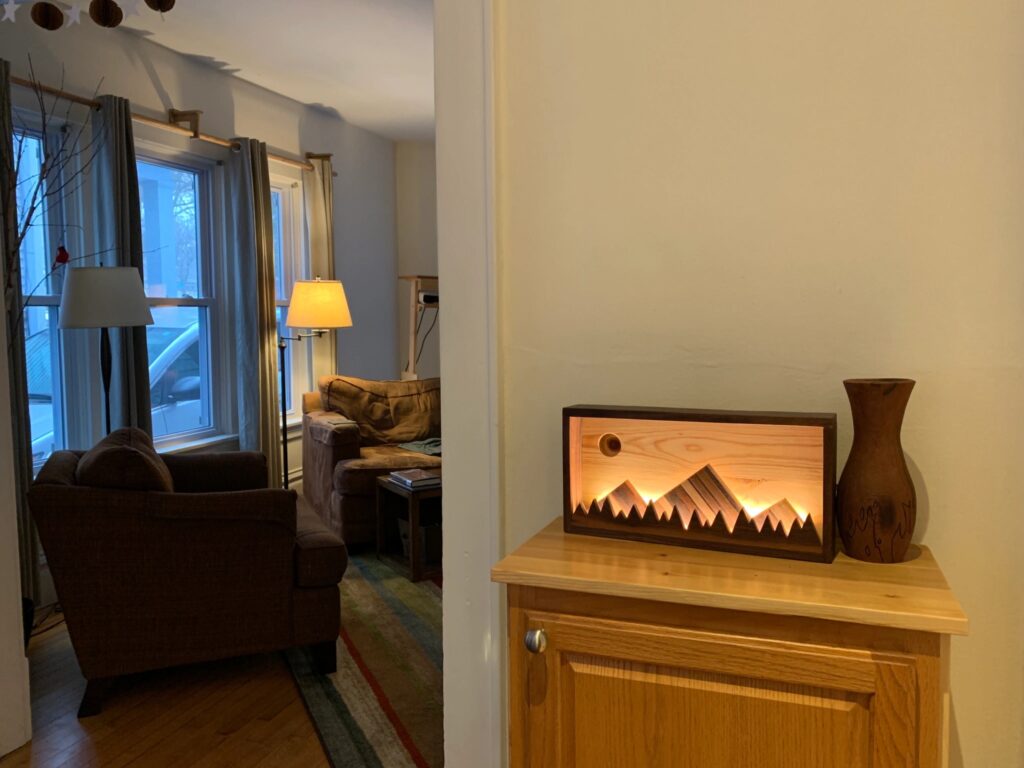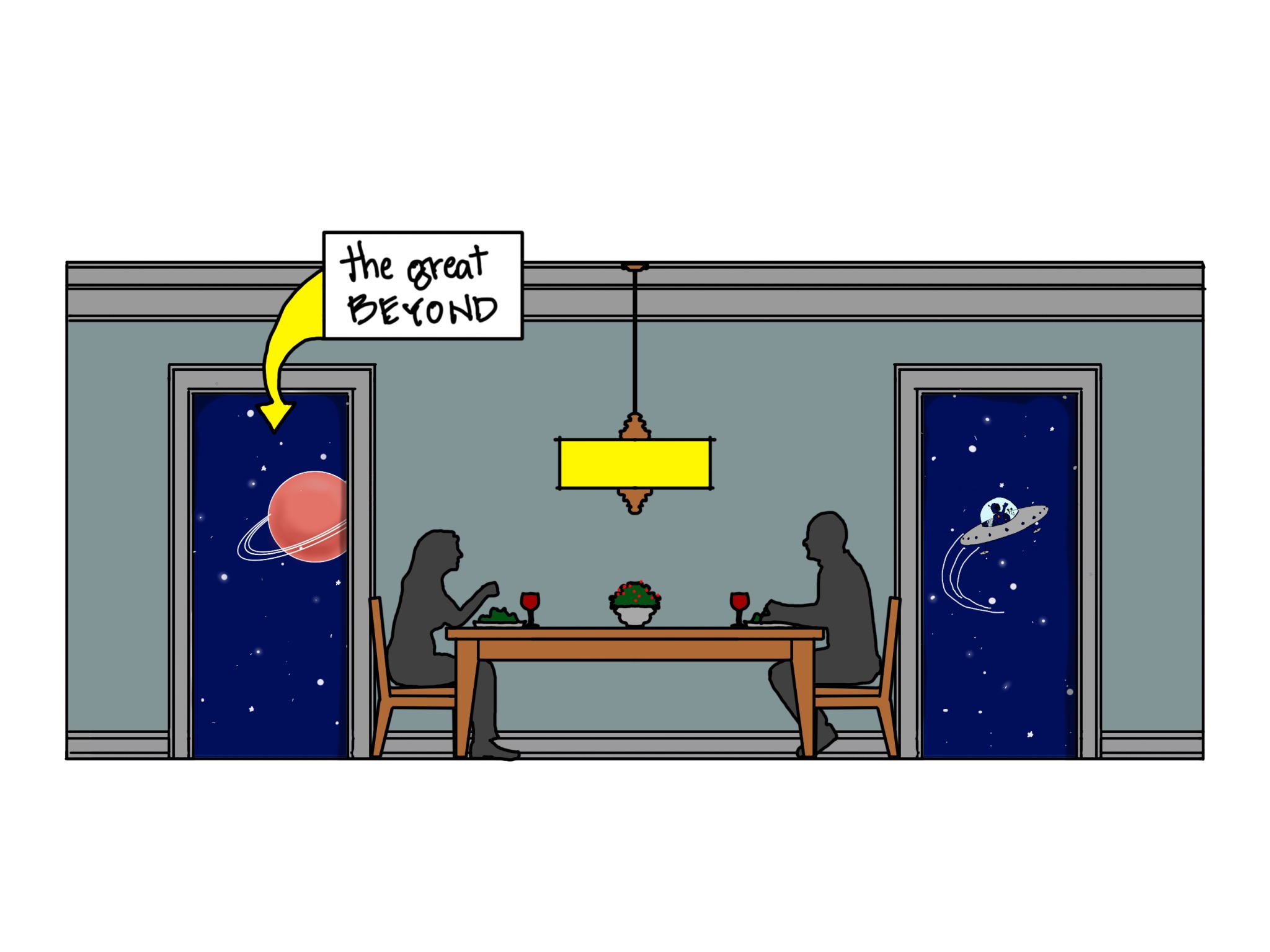Today we are going boldly into the great unknown, the vast universe beyond the dining room.
Ahem. Sometimes I get a little carried away. Okay, often I get a little carried away. Especially when it comes to coming up with creative ways to talk about light and lighting. So please forgive me when I wax poetic – there is some real advice here.
In a recent post on dining rooms in my 1THING: New Build series I described a theory of “lighting hugs” that can make us feel more comfortable in a space. The same argument applies to plug-in solutions: adding soft and sparkling light around the perimeter of the dining room just feels better. The easiest way to do it is with lamps. It’s so easy, in fact, that I’m going to blow right past this solution and get to something else entirely – light outside the dining room. Before I leave the room, here’s a quick sketch to illustrate the most common plug-in solution for making dining rooms look and feel better:
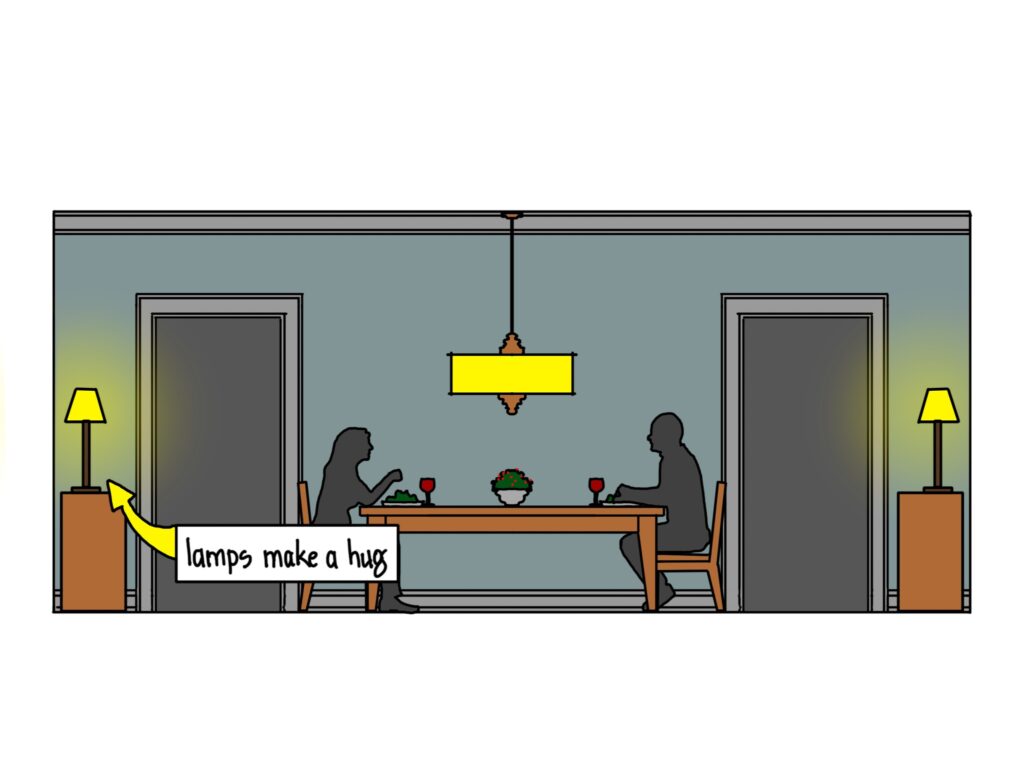
That’s it. Put a lamp on it. Okay, now that we’ve covered the bases, let’s move beyond. Because lighting hugs only work where there are walls or tables to hold and reflect light. The void of open doorways is like a great abyss, a great landscape of darkness and desolation. Well, darkness, at least.
Here’s the 1THING idea for dining rooms: add light beyond the room to feel more comfortable in the room. Here’s a photo of my humble dining room awhile back:
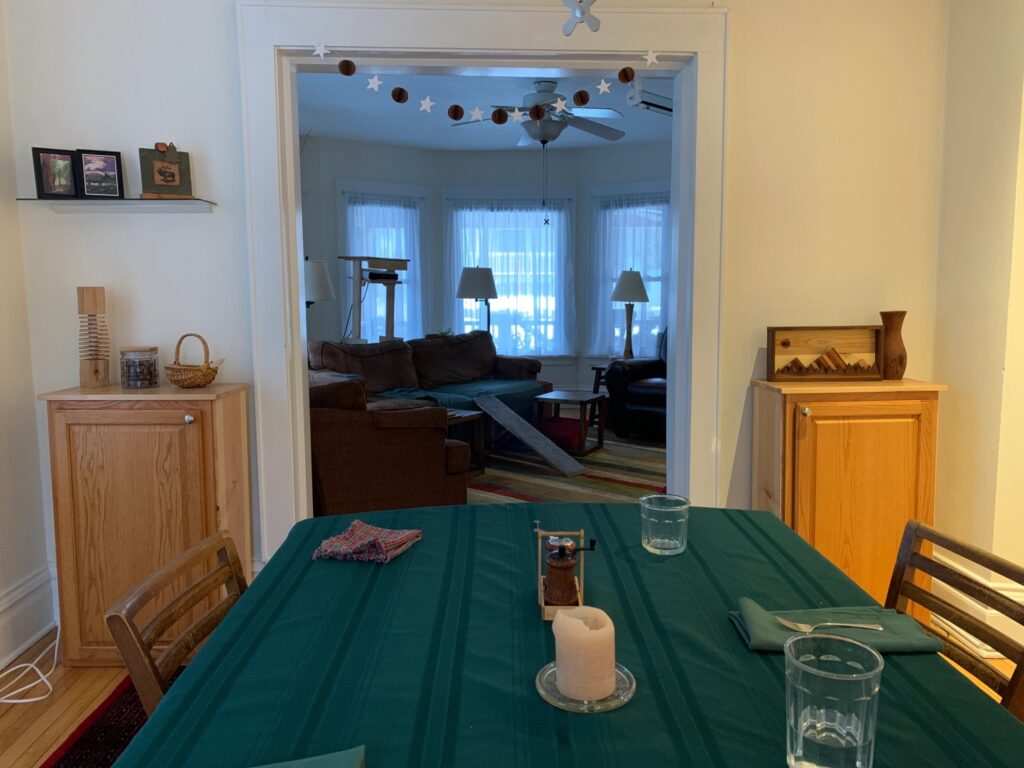
I should have cleaned up a bit, but oh well. Now here’s the same room with a couple of handmade lamps by my son Sam:
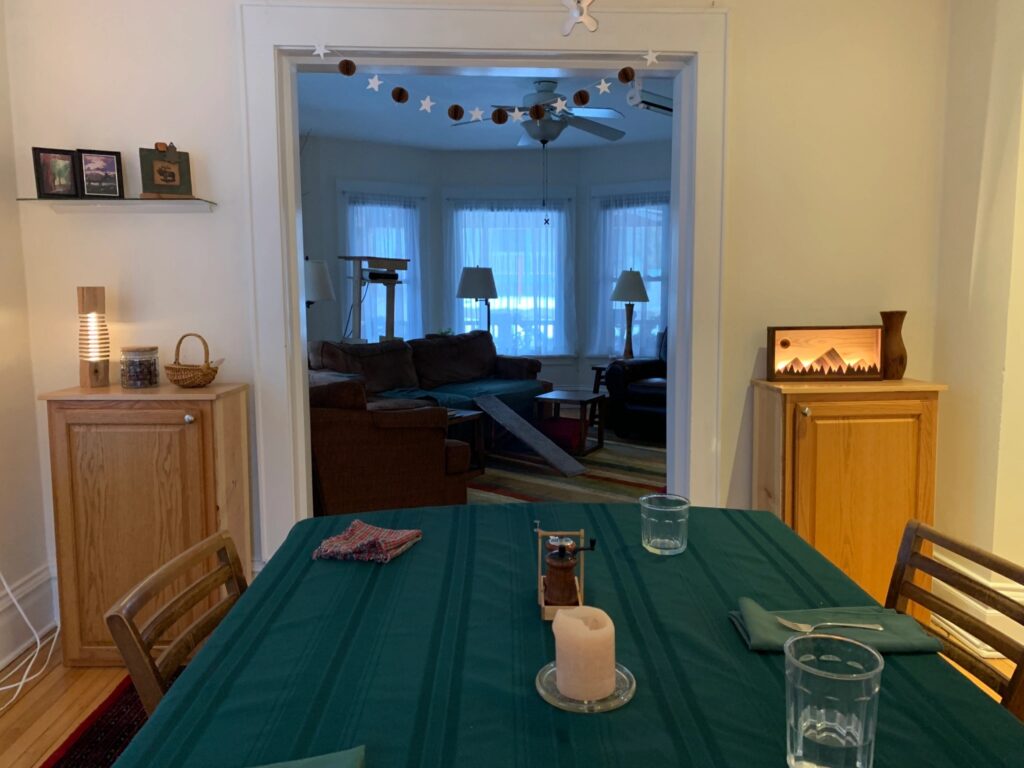
See how much nicer it feels already? That’s a lighting hug. And yes, Sam is setting up an Etsy shop so someday, for a small fortune, you may be able to acquire such lovely wooden lamps. But that’s not the point of this post. The darkness beyond – visible only because it is daytime – is what I really want to talk about.
It is wasteful to have lights on in the next room, sure. I wish I could magically make the energy consumption of lighting disappear, like when we are camping. Since I can’t, I’ll just wish that you start thinking about lighting the same way you think about heating. While we’re sitting in the dining room, the heat is still on in the living room and no one throws a fit. Okay, that might not be the best analogy, but you get the idea: I feel bad about using electricity beyond what is “strictly necessary for function,” but I don’t want to live in a prehistoric cave.
We don’t need the lights on as bright as they go, however, when we’re not in the room. Just a few lights can make a big difference:
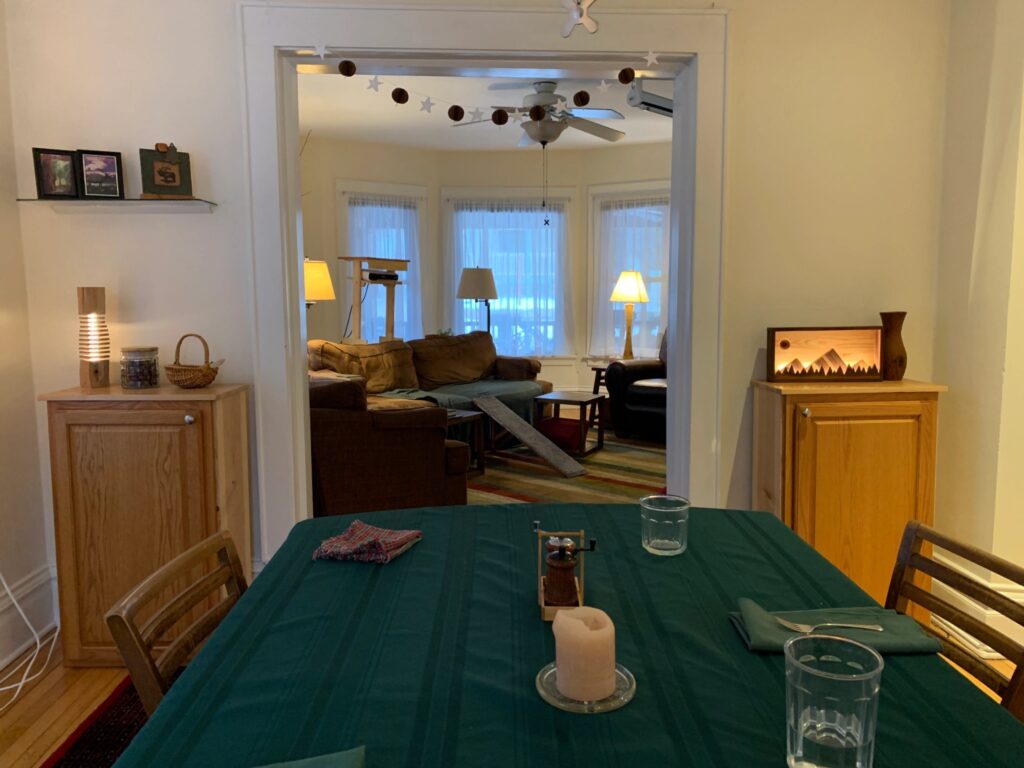
There are just two lamps on in the next room, but already the dining room feels a bit better. Why? Because we’re scared of the dark (really, and that’s okay) and a little light makes us feel comfortable.
So, if you want to give your dining room a lighting hug and don’t want to hire an electrician, turn on a lamp or two in the next room. Good lighting takes into account everything your eyes can see, even if your eyes can see into the great beyond.
Check out more of my 1THING: Plug In series.
And one more thing…
I might as well brag a tiny bit. I think these handmade illuminated wood things my son made are cool.
